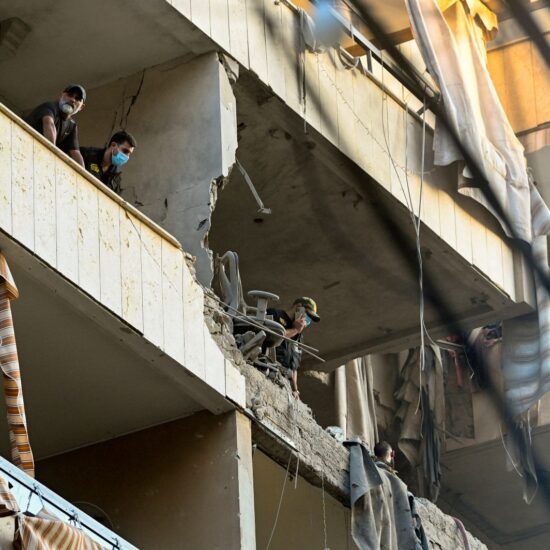
The financial recovery process remains flawed due to the absence of a concrete plan to recapitalize banks and compensate depositors—critical elements missing from all government proposals. Without a clear vision on how to restore liquidity and restructure the banking sector, Lebanon risks prolonging its economic paralysis rather than implementing an effective and coherent solution. Lebanon’s banking restructuring efforts appear to be riddled with contradictions, making recovery efforts increasingly difficult. With political interference, lobbying efforts, and a lack of consensus among stakeholders, the proposed law has become a masterclass in how not to fix an economic disaster
Lebanon’s financial crisis has triggered a wave of legislative efforts, yet instead of a unified recovery strategy, the government has produced a patchwork of conflicting policies, each addressing fragments of the problem without tackling the core issue: bridging the financial gap. The latest attempt at banking restructuration has raised concerns about its effectiveness, with several contradictions emerging in the proposed policies. It was presented as a solution diluted through excessive judicial loopholes that allow creditors and shareholders to challenge decisions, undermining the restructuring process and increasing litigation risks. At the same time, the government has introduced amendments to banking secrecy laws to enhance financial transparency, yet these reforms clash with restructuring efforts by exposing banks to further legal complications. Lebanon’s banking restructuration efforts appear to be riddled with contradictions, making recovery efforts increasingly difficult. Without stronger legal protections, clearer governance measures, and limits on judicial interference, the financial sector risks further instability. With political interference, lobbying efforts, and a lack of consensus among stakeholders, the proposed law has become a masterclass in how not to fix an economic disaster.
Perhaps the biggest limitation is that the Banking Restructuration Law alone does little without the accompanying Gap Resolution Law, which will determine critical financial recovery measures. Without execution clarity, restructuring efforts remain contingent on future political decisions. Additionally, the five-year lookback for criminal liability—which only affects senior managers/directors of liquidated banks—seems inadequate. A longer timeframe may be necessary to ensure proper accountability. In short, Lebanon’s banking reforms must go beyond piecemeal legal changes and ensure a coherent, transparent, and well-funded strategy. Without clear conflict-of-interest safeguards, judicial clarity, and financial stability mechanisms, the restructuring process risks further delays, inefficiency, and erosion of public trust. Moreover, while Lebanon has engaged in repeated discussions with the IMF, the lack of alignment between domestic financial policies and international recommendations has stalled any meaningful progress toward external assistance. The financial recovery process remains flawed due to the absence of a concrete plan to recapitalize banks and compensate depositors—critical elements missing from all government proposals. Without a clear vision on how to restore liquidity and restructure the banking sector, Lebanon risks prolonging its economic paralysis rather than implementing an effective and coherent solution. The country’s leaders must recognize that reactive measures and legislative contradictions are insufficient; a comprehensive financial roadmap is imperative to move beyond crisis management and toward actual recovery.
Just as a reminder Lebanon’s debt-to-GDP ratio exceeded 180%, making it one of the highest in the world as Depositor Losses are over $65 billion in deposits (which remain inaccessible due to banking restrictions). The economy has shifted towards unofficial dollarization, with over 80% of transactions now conducted in USD. The Lebanese pound has lost over 95% of its value since the crisis began. Does this new law help to solve those figures?
The judicial loopholes
Lebanon’s Banking Restructuration Law grants the Resolution Authority (RA) broad powers, including liquidating banks, removing senior management, appointing new executives, and requiring financial institutions to divest assets. Given the systemic nature of the crisis, ensuring public trust in the RA’s governance is paramount. However, several inconsistencies and concerns within the law weaken its credibility. One major issue is the eligibility criteria for RA members. Non-BDL (Banque du Liban) appointees must have 20 years of experience, a requirement that seems excessively restrictive and may exclude qualified professionals. Additionally, the law lacks clarity on conflict-of-interest rules. It requires RA members to declare relationships with banks over the last two years, yet also sets a 10-year look-back for independence—an inconsistency that could create governance loopholes. Expanding criteria to cover auditors, regulators, and supervisors would strengthen oversight and ensure impartiality. Another critical oversight is funding for the Banking Control Commission (BCC), which assesses whether banks can continue operations based on independent valuations. The law does not specify how the BCC will be financed, raising concerns about its ability to scale up resources. Without financial independence, the BCC risks becoming susceptible to influence, which could compromise the integrity of restructuring decisions.
Transparency also remains a concern. The RA is required to publish annual reports, but given the urgency of the crisis, quarterly reports with extensive details would be more effective. While RA decisions are published in the Official Gazette, this mostly serves as mere notifications rather than substantive disclosure. Given Lebanon’s financial instability and lack of public trust, greater transparency is necessary to reassure depositors and stakeholders. The law’s judicial framework is another contentious issue. While RA decisions are not subject to judicial recourse, courts often refrain from reviewing their merits in other jurisdictions. However, this non-reviewability wouldn’t be problematic if sufficient checks on the RA’s power existed. The proposed Special Court will only adjudicate disputes between creditors and liquidators, leaving broader restructuring decisions shielded from legal challenge—which could fuel controversy.
Contradictory scenarios in Banking Restructuration
Previous drafts protected restructuring officials from lawsuits except in cases of fraud or misconduct. There is a serious concern over legal immunity Vs. personal liability. The final law exposes them to uncapped personal liability, discouraging professionals from participating. Also there is a concern over Judicial Review Vs. Unrestricted Legal Challenges. Earlier versions limited judicial review to procedural legality. The final law allows creditors and shareholders to challenge decisions on the merits, leading to potential litigation chaos. And here comes the claw back of executive compensation Initial drafts empowered the HBC to recover funds paid to senior managers. Whereas the final version limits claw back power to vague violations of governance rules, reducing accountability. There is also a clear conflict of interest signal. The law permits individuals to serve on the HBC or as liquidators even if they face civil or criminal liability. This loophole raises concerns about impartiality, potentially allowing compromised individuals to influence decisions.
Lebanon’s banking restructuration efforts appear to be riddled with contradictions, making recovery efforts increasingly difficult. Without stronger legal protections, clearer governance measures, and limits on judicial interference, the financial sector risks further instability. With political interference, lobbying efforts, and a lack of consensus among stakeholders, the proposed law has become a masterclass in how not to fix an economic disaster.
The Grand Plan: a recipe for chaos
The government’s restructuration initiative was supposed to audit the Central Bank’s foreign assets (because knowing how much money is left is apparently optional), evaluate the largest 14 banks (but only if they agree to be evaluated), unify exchange rates (because having multiple rates was working so well), and compensate depositors (except for the ones who actually need their money). Unfortunately, the plan was swiftly approved by Parliament, proving that even in times of crisis, Lebanon’s political elite is adamant to playing bureaucratic ping-pong.
And here comes the Lobbying Circus of The Association of Banks in Lebanon (ABL) who wasted no time in launching a counterproposal, arguing that: banks should not bear the consequences of sovereign decisions (because they were just innocent bystanders in the financial collapse), deposits should be transformed into state debts (because nothing says “trust us” like turning savings into IOUs), the government should take full responsibility (because accountability is a foreign concept). This masterstroke of financial wizardry effectively shifts the burden onto the state while ensuring that depositors remain trapped in a never-ending cycle of uncertainty.
Another wizardry in the numbers game: who gets paid?
The government initially proposed a 100,000 US dollars payout cap, but estimates suggest that the liquid reserves of commercial banks and the Central Bank are nowhere near sufficient to cover this amount.
Current statistics indicate that 94% of account holders have less than $200,000 in deposits, but they only represent 30% of total deposits. The remaining 70% of deposits—valued at $65.54 billion—are held by just 87,000 accounts. Translation: The vast majority of Lebanese citizens will get crumbs, while the elite continue to hold the lion’s share of the country’s wealth. The International Monetary Fund (IMF) has repeatedly stressed the need for a realistic recovery plan, but Lebanon’s approach remains anything but realistic. The IMF’s recommendations include gradual compensation mechanisms (which Lebanon has ignored), recapitalization of the banking sector (which Lebanon has delayed), public sector reform (which Lebanon has conveniently forgotten about). Instead of implementing meaningful reforms, Lebanon’s leadership continues to engage in political maneuvering, ensuring that the financial crisis remains unresolved.
What has or has not changed ?
Previous drafts of Lebanon’s Banking Restructuring Law provided legal immunity to individuals involved in the restructuring process, including the Higher Banking Commission (HBC), Bank Control Commission (BCC), liquidators, independent valuators, interim managers, and third-party consultants. This immunity was intended to protect professionals from shareholder and creditor lawsuits, ensuring that they could carry out their assignments fairly and without undue legal pressure.
The immunity was not absolute, as exemptions were made in cases of willful misconduct, fraud, and deliberate negligence, ensuring accountability while allowing legitimate restructuring efforts to proceed. However, the final version of the law significantly dilutes these protections, exposing professionals, consultants, and decision-makers to uncapped personal liability if a shareholder or creditor claims negligence or gross error. This shift could deter participation in the restructuring process, as legal risks become too high for many professionals and organizations.
Key concerns include chilling effect on participation–professionals may hesitate to engage in restructuring if they face personal lawsuits, legal vulnerability for technical experts (even third-party advisors and companies carrying out technical assessments may be at risk) and institutional vs. personal liability–typically, liability in such cases should be institutional unless a crime has been committed. The new law places undue burden on individuals. With the lowered threshold for liability—where negligence alone could trigger personal lawsuits—Lebanon risks pushing away qualified experts and firms who might otherwise help stabilize the financial sector.
The state may have to indemnify professionals (i.e., cover legal costs and liabilities). However, even this might not be enough if liability remains personal. Also global firms and advisors may refuse to engage, fearing excessive litigation risks. Finally, risk aversion among local experts, Lebanese professionals and firms might avoid restructuring roles, further delaying reform efforts.
Special Court and Judicial Safeguards
Previous drafts of Lebanon’s Banking Restructuring Law positioned the Higher Banking Commission (HBC) as the final authority in restructuring decisions, shielding its rulings from judicial interference except in very limited circumstances. This approach aligns with best practices in other jurisdictions, where challenges typically focus on the legality of the exercise of power rather than the merits of the decisions themselves.
However, the finalized version of the law dramatically weakens this principle, exposing the restructuring process to potential litigation chaos, regulatory uncertainty, and financial instability. The new law allows creditors and shareholders to challenge HBC decisions on the merits, rather than limiting judicial review to procedural legality. This shift invites mass litigation—creditors and shareholders can file numerous lawsuits against restructuring decisions.
Also claims against professionals are not just allowed but welcomed—everyone involved in the process (liquidators, independent valuators, technical advisors) could face legal challenges. While appealing before the Special Court does not suspend execution of the restructuring plan, courts may still grant injunctions, halting restructuring efforts and overturn HBC rulings, even if legally sound. We can still argue that the law exposes the state to liabilities, creating an expensive legal minefield.
Unlike other jurisdictions where judicial review is strictly limited, Lebanon’s approach jeopardizes the stability of financial recovery efforts. The law has also been watered down in several critical areas, further weakening oversight such as clawback of dividends and executive compensation. Also the final draft limits power, applying only to funds paid in violation of the law, Central Bank circulars, or good governance rules.
The final law also permits individuals to serve on the HBC or take restructuring roles even if they face civil or criminal liability related to the banks in question. This loophole raises concerns about impartiality, potentially allowing compromised individuals to influence decisions on financial institutions they may have mismanaged.
Where do we go from here?
There are severe consequences and strategic oversight and increased risk of legal paralysis because unrestricted judicial reviews could lead to endless lawsuits, obstructing financial restructuring. Also unclear is the indemnity structures which may deter professionals from participating in the process.
In sum seemingly, the Law is less about fixing the economy and more about maintaining the status quo. With political interference, lobbying efforts, and a refusal to acknowledge reality, the country’s financial sector remains in freefall. If Lebanon’s leaders were aiming for economic recovery, they’ve certainly missed the mark—spectacularly.
A final question, what would the government do if global advisory firms may refuse to engage in Lebanon’s restructuring due to excessive litigation risk. One thing is sure: lack of strong governance measures could further delay IMF cooperation and recovery funding. So, back to square one?
Maan Barazy is an economist and founder and president of the National Council of Entrepreneurship and Innovation. He tweets @maanbarazy
The views in this story reflect those of the author alone and do not necessarily reflect the beliefs of NOW








